
Otjiwarongo: The Gateway to Namibia's Wildlife Wonders
Explore Otjiwarongo, a vibrant Namibian city rich in wildlife, culture, and history, serving as the ideal gateway to the country's stunning natural reserves.
Nestled in the heart of Namibia, Otjiwarongo is a charming city that serves as a perfect base for exploring the country's rich wildlife and natural beauty. The name 'Otjiwarongo' means 'place where fat cattle graze,' reflecting its strong agricultural heritage. The city is known for its friendly atmosphere and well-maintained streets, making it an inviting stop for tourists. One of Otjiwarongo's key attractions is the Cheetah Conservation Fund, a world-renowned organization dedicated to the survival of cheetahs in the wild. Here, visitors can learn about these majestic creatures and even witness them up close. The city is also a stepping stone to the Waterberg Plateau Park, a stunning nature reserve offering breathtaking views and diverse wildlife, including rare species like the black rhino. Otjiwarongo's vibrant local culture can be experienced at its bustling markets and shops, where you can find unique crafts and delicious local cuisine. The city is also home to historical landmarks such as the Locomotive No 41, a reminder of Namibia's colonial past. With its blend of natural wonders, wildlife conservation efforts, and cultural nuances, Otjiwarongo promises an enriching and memorable experience for every traveler.
Local tips in Otjiwarongo
- Visit the Cheetah Conservation Fund early in the morning for the best animal activity and guided tours.
- Carry cash, as some local markets and smaller shops might not accept credit cards.
- Try traditional Namibian dishes at local eateries for an authentic culinary experience.
- Wear comfortable walking shoes when exploring the Waterberg Plateau Park.
- Keep a refillable water bottle handy, as the climate can be quite arid.
Otjiwarongo: The Gateway to Namibia's Wildlife Wonders
Nestled in the heart of Namibia, Otjiwarongo is a charming city that serves as a perfect base for exploring the country's rich wildlife and natural beauty. The name 'Otjiwarongo' means 'place where fat cattle graze,' reflecting its strong agricultural heritage. The city is known for its friendly atmosphere and well-maintained streets, making it an inviting stop for tourists. One of Otjiwarongo's key attractions is the Cheetah Conservation Fund, a world-renowned organization dedicated to the survival of cheetahs in the wild. Here, visitors can learn about these majestic creatures and even witness them up close. The city is also a stepping stone to the Waterberg Plateau Park, a stunning nature reserve offering breathtaking views and diverse wildlife, including rare species like the black rhino. Otjiwarongo's vibrant local culture can be experienced at its bustling markets and shops, where you can find unique crafts and delicious local cuisine. The city is also home to historical landmarks such as the Locomotive No 41, a reminder of Namibia's colonial past. With its blend of natural wonders, wildlife conservation efforts, and cultural nuances, Otjiwarongo promises an enriching and memorable experience for every traveler.
When is the best time to go to Otjiwarongo?
Iconic landmarks you can’t miss
Crocodile Farm Otjiwarongo
Explore the captivating world of crocodiles at Crocodile Farm Otjiwarongo, a must-visit attraction in Namibia for wildlife enthusiasts and families alike.
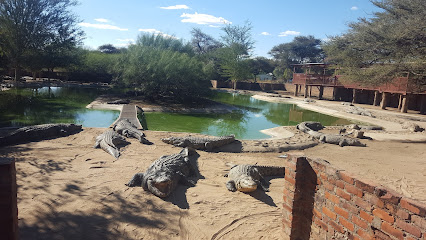
Cest Si Bon Hotel
Experience the charm and comfort of Cest Si Bon Hotel in Otjiwarongo, a perfect blend of local hospitality and natural beauty.

Casa Forno County Hotel
Experience luxury and local charm at Casa Forno County Hotel, your perfect getaway in Otjiwarongo, Namibia with exquisite dining and stunning landscapes.

Out of Africa Town Lodge
Discover the beauty of Namibia at Out of Africa Town Lodge, where comfort meets adventure in the heart of Otjiwarongo.

Okonjima Nature Reserve
Discover the majestic landscapes and diverse wildlife of Okonjima Nature Reserve, a premier destination for nature lovers in Namibia.
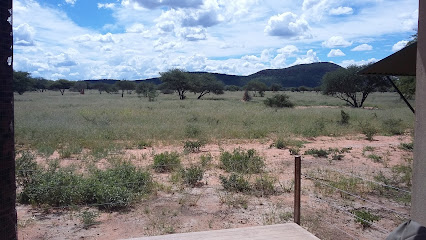
Waterberg Plateau National Park
Discover the breathtaking beauty of Waterberg Plateau National Park, a haven for adventure and wildlife enthusiasts in Namibia's stunning landscapes.
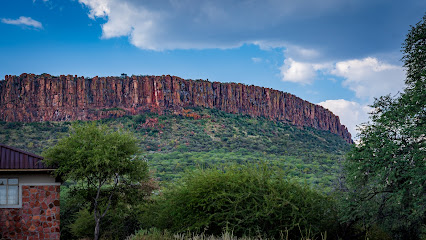
Shell
Experience the convenience and local charm at Shell in Otjiwarongo, your essential gas station stop while exploring Namibia's stunning landscapes.
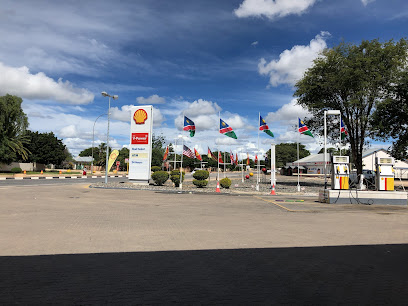
Midway Convenience Shell
Discover the essential stop for travelers in Otjiwarongo, offering fuel, snacks, and invaluable local insights at Midway Convenience Shell.
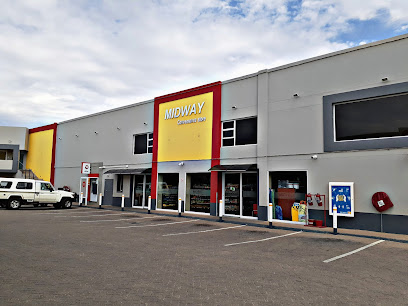
Memoirs Bar & Restaurant
Experience the authentic flavors of Namibia at Memoirs Bar & Restaurant in Otjiwarongo, where every dish tells a story.
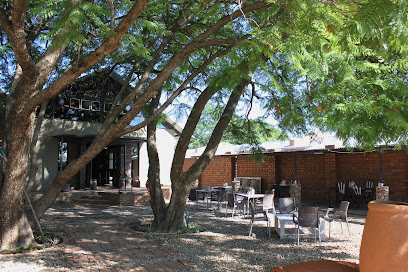
Hadassa Guest House B&B
Experience hospitality and comfort at Hadassa Guest House B&B in Otjiwarongo, your perfect retreat for exploring Namibia's natural wonders.

Okonjima Bush Camp
Experience the enchanting blend of luxury and wilderness at Okonjima Bush Camp, a top destination for nature lovers exploring Namibia's rich wildlife.
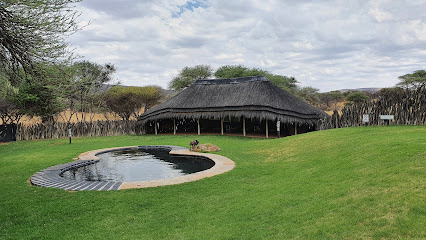
Waterberg Guest Farm Namibia
Discover the serene beauty of Waterberg Guest Farm in Namibia, a perfect blend of nature, adventure, and comfort for all travelers.
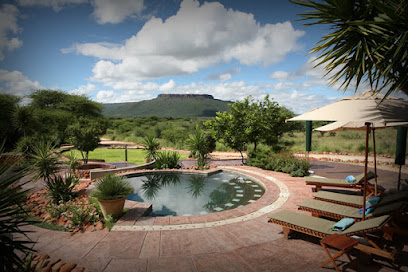
Kamaku Guest House B&B
Discover the cozy charm of Kamaku Guest House B&B in Otjiwarongo, where comfort meets Namibian hospitality for an unforgettable stay.
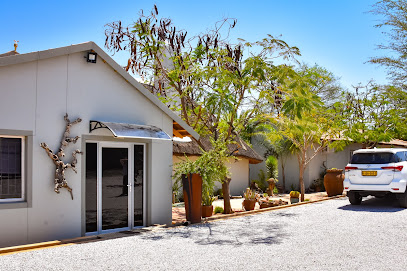
Otjibamba Lodge
Discover the perfect blend of comfort and adventure at Otjibamba Lodge, your serene retreat in the heart of Namibia's stunning landscapes.
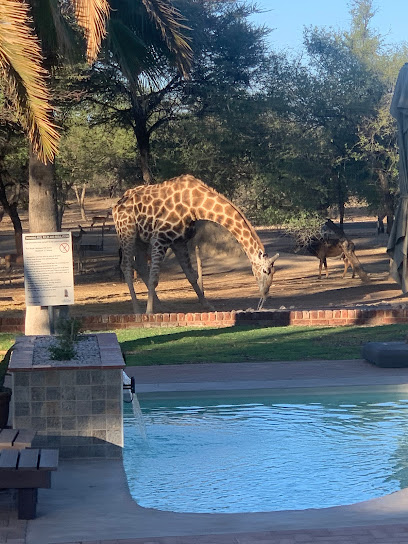
Etemba Beerhouse
Discover Etemba Beerhouse in Otjiwarongo - a vibrant restaurant serving authentic Namibian cuisine and local brews in a warm and welcoming atmosphere.
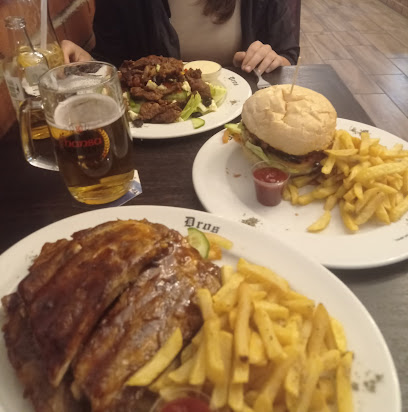
Unmissable attractions to see
Okonjima Plains Camp
Unveil the Wonders of Namibia's Wildlife at Okonjima Plains Camp—A Sanctuary for Nature Lovers and Adventure Seekers.

Okonjima Nature Reserve
Explore Okonjima Nature Reserve in Namibia, a haven for wildlife enthusiasts, featuring luxurious lodgings and unforgettable safari adventures.

Okonjima Bush Camp
Experience the wild beauty of Namibia at Okonjima Bush Camp, where luxury meets nature for an unforgettable adventure.

Okonjima Campsites
Experience the natural beauty and wildlife of Namibia at Okonjima Campsites, your gateway to adventure in the Okonjima Nature Reserve.

AfriCat Foundation
Experience the magic of African wildlife at the AfriCat Foundation in Okonjima, where conservation meets unforgettable encounters with big cats.

Africat Foundation Day Visitors Centre
Immerse yourself in wildlife conservation at Africat Foundation Day Visitors Centre in Okonjima Nature Reserve, a unique destination for animal lovers.

Museum of Namibian Fashion
Discover the rich textile heritage of Namibia at the Museum of Namibian Fashion in Otjiwarongo, a vibrant cultural experience for all visitors.
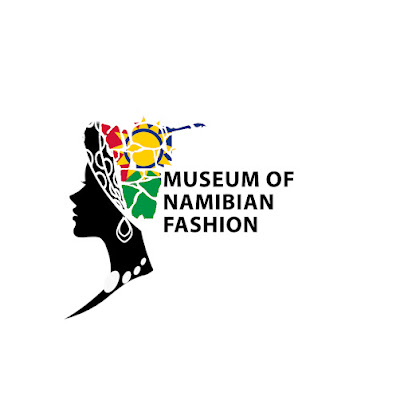
Waterberg Plateau National Park
Explore the breathtaking landscapes and rich biodiversity of Waterberg Plateau National Park in Namibia, a UNESCO Biosphere Reserve perfect for nature lovers.

Efululu Entertainment Park
Discover the beauty of nature and family fun at Efululu Entertainment Park in Otjiwarongo, where adventure and relaxation meet in a serene environment.

Lava's Park
Discover tranquility and adventure at Lava's Park in Otjiwarongo – a perfect natural retreat for tourists seeking the beauty of Namibia.

Otjiwarongo Arms & Ammo
Explore outdoor adventures with shooting ranges and guided hunts at Otjiwarongo Arms & Ammo, the ultimate destination for thrill-seekers in Namibia.

Essential places to dine
Crocodile Farm Otjiwarongo
Experience Namibia's rich wildlife at Crocodile Farm Otjiwarongo – where dining meets adventure in the heart of nature.
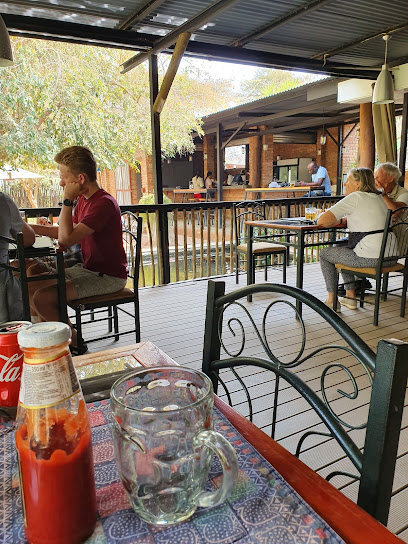
Casa Forno County Hotel
Experience authentic Namibian cuisine and hospitality at Casa Forno County Hotel in Otjiwarongo – your perfect getaway destination.

Wimpy
Experience quick bites at Wimpy in Otjiwarongo – where delicious fast food meets friendly service.
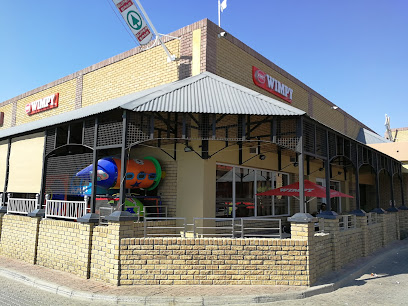
KFC Otjiwarongo
Enjoy delicious fast food at KFC Otjiwarongo - A must-visit dining destination for travelers in Namibia.
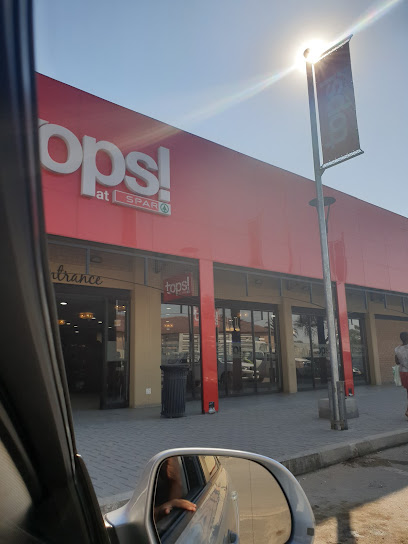
Memoirs Bar & Restaurant
Discover the vibrant culinary scene at Memoirs Bar & Restaurant in Otjiwarongo - where local flavors meet exceptional dining.

Podjo's Restaurant, Bar & Grill
Experience authentic Namibian cuisine at Podjo's Restaurant, Bar & Grill in Otjiwarongo – where every dish tells a story.
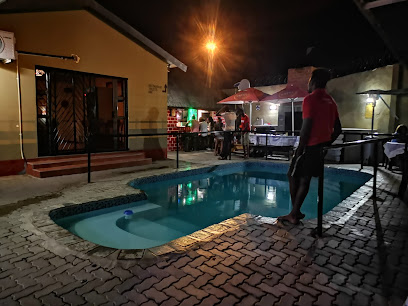
CABRITO, Lounge, Bar & Restaurant
Experience the vibrant atmosphere at CABRITO Lounge & Restaurant in Otjiwarongo – where delicious cuisine meets lively entertainment.
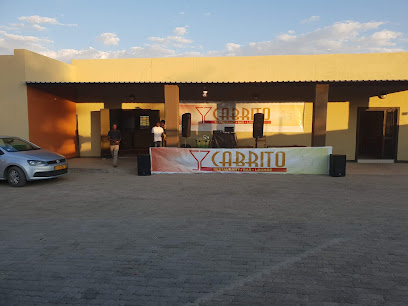
Otjibamba Lodge
Discover Otjibamba Lodge: Where Authentic Namibian Cuisine Meets Comfortable Accommodation in Stunning Natural Surroundings.
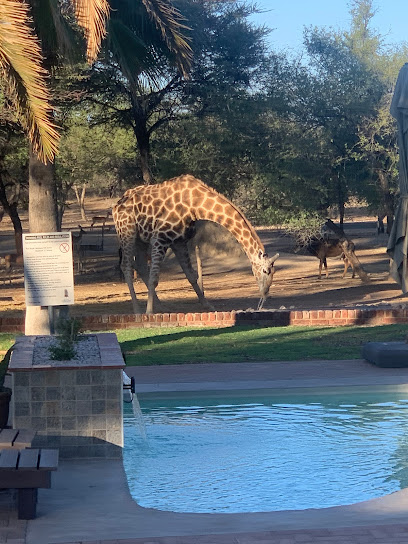
Etemba Beerhouse
Discover Etemba Beerhouse in Otjiwarongo: savor local brews and delicious cuisine amidst vibrant Namibian culture.
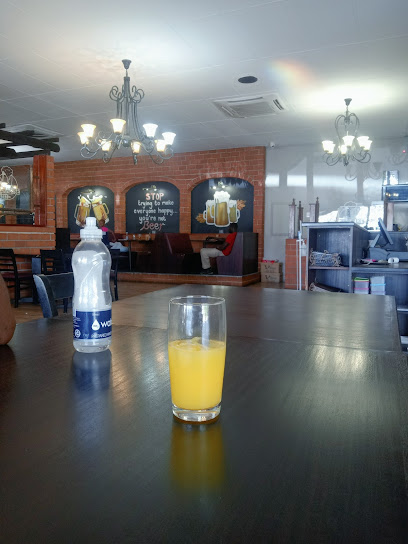
Okeri Guesthouse Bed & Breakfast
Discover comfort and warmth at Okeri Guesthouse Bed & Breakfast in Otjiwarongo – your home away from home in Namibia.

Kari's Place
Discover the delightful flavors of Namibia at Kari's Place in Otjiwarongo – where culinary excellence meets cozy comfort.

Hungry Lion Otjiwarongo
Discover Hungry Lion Otjiwarongo: A Fast-Food Delight Specializing in Fried Chicken That Captures the Essence of Namibian Flavor.
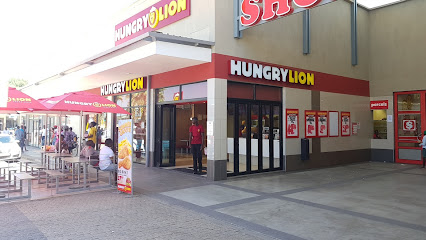
Rustic Spoon Urban Eatery
Experience the essence of Namibian cuisine at Rustic Spoon Urban Eatery – where every meal tells a story.
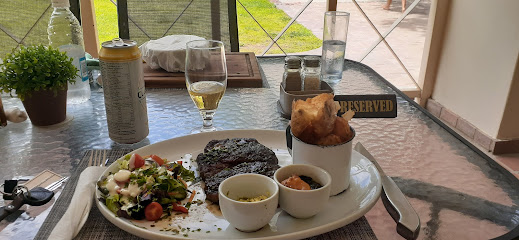
Elite Biltong
Discover Elite Biltong in Otjiwarongo – where traditional Namibian flavors come alive through expertly crafted biltong and warm hospitality.

By_die_3way
Experience authentic Namibian flavors at By_die_3way – a delightful restaurant in Otjiwarongo perfect for every palate.
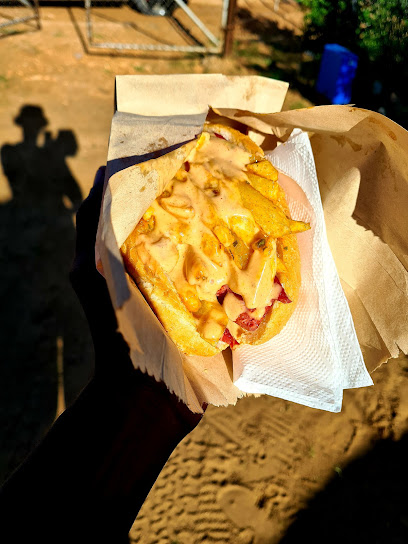
Markets, malls and hidden boutiques
SUPERSPAR Theo's
Explore the vibrant flavors of Otjiwarongo at SUPERSPAR Theo's, your go-to supermarket for fresh produce and local delicacies.

Crocodile Farm Otjiwarongo
Experience the thrill of wildlife up close at Crocodile Farm Otjiwarongo, a unique attraction for animal lovers and adventure seekers in Namibia.
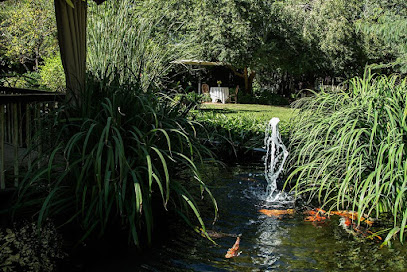
Shoprite Otjiwarongo
Experience the heart of Namibia at Shoprite Otjiwarongo, where quality groceries meet local charm in a vibrant shopping environment.
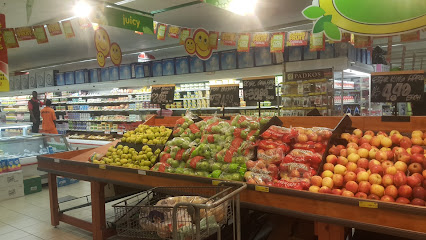
Otjiwarongo Town Square
Discover the heart of Otjiwarongo at Town Square, where local culture, fresh produce, and vibrant crafts await every visitor.
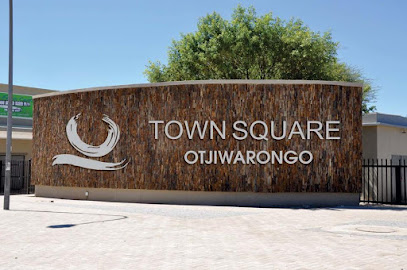
WB Supermarkets Otjiwarongo
Explore WB Supermarkets Otjiwarongo for a unique blend of local and international products in a friendly shopping environment.
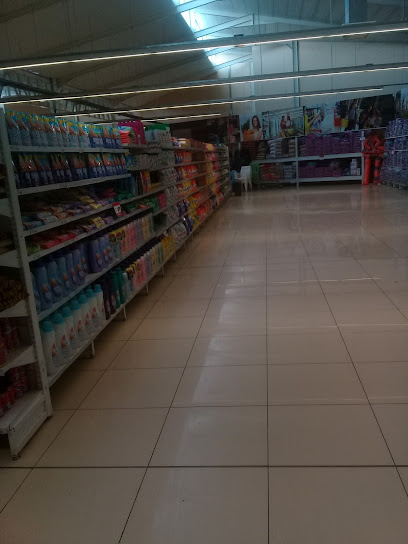
Pupkewitz Megabuild
Discover Pupkewitz Megabuild in Otjiwarongo for all your hardware needs, offering quality tools and materials for every project.
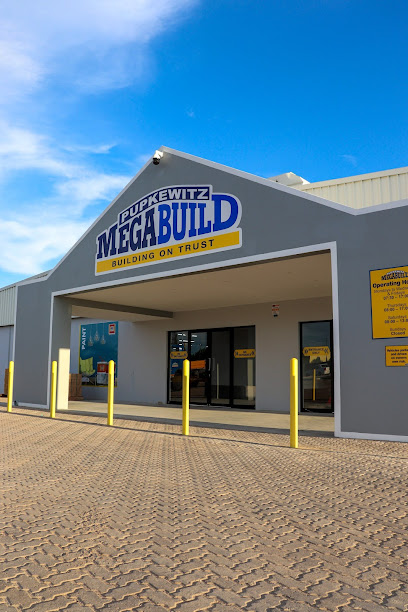
Bohemia Book Shop
Discover the charm of Bohemia Book Shop in Otjiwarongo: where coffee meets literature in a cozy and welcoming environment.
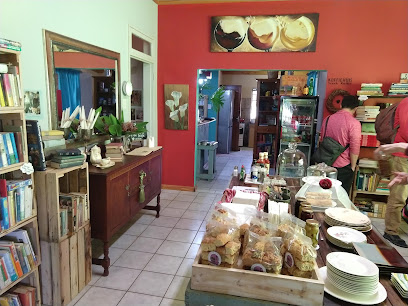
Kuhanga Self-Help
Explore local craftsmanship and community spirit at Kuhanga Self-Help, a vibrant shopping mall in Otjiwarongo, Namibia.
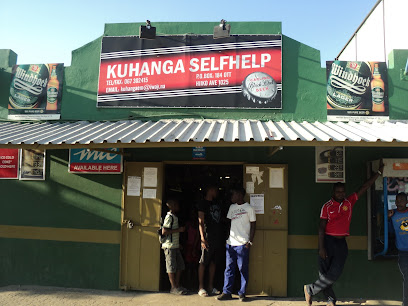
PEP Otjiwarongo Orwetoveni
Shop stylish and affordable clothing for every family member at PEP Otjiwarongo, the ultimate destination for fashion in Namibia.
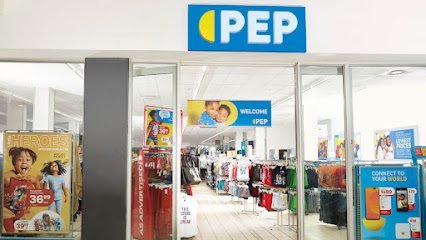
Build it Otjiwarongo
Explore Build it Otjiwarongo - your ultimate destination for building materials and home improvement in the heart of Namibia.
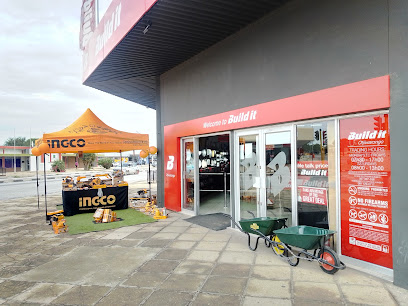
Agrimark Otjiwarongo
Explore Agrimark Otjiwarongo, a local general store filled with authentic Namibian goods and a friendly atmosphere for tourists.
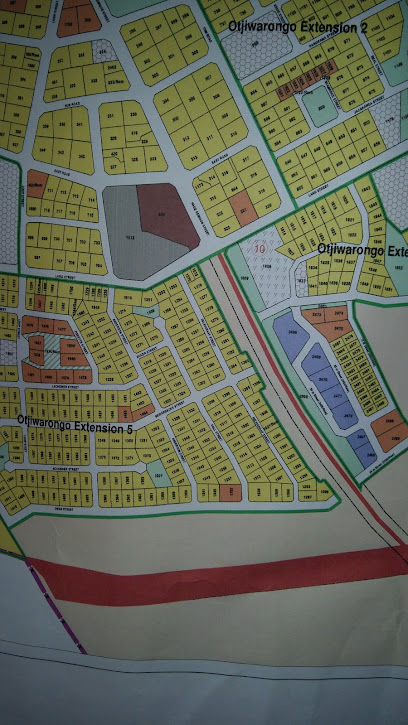
Mr Price / MRP
Explore trendy and affordable fashion at Mr Price in Orwetoveni Otjiwarango – a shopping haven for stylish travelers!
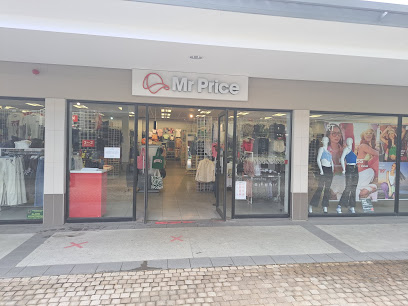
Flintstone Creations
Explore Flintstone Creations, a garden center in Otjiwarongo where nature meets creativity, offering plants, decor, and local artistry.
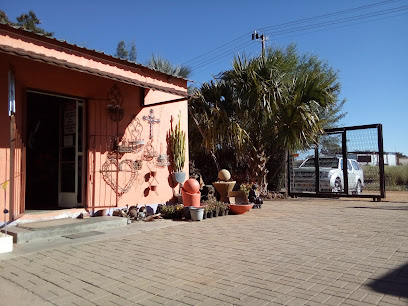
MK's Flowers Otjiwarongo
Explore the floral wonders of MK's Flowers in Otjiwarongo, where creativity meets nature in stunning arrangements.
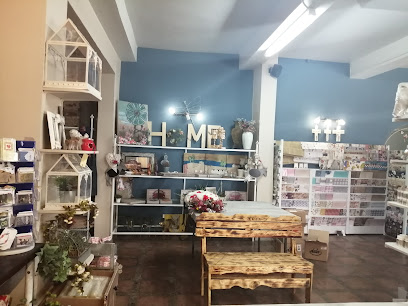
General Suppliers
Explore a vibrant home goods store in Otjiwarongo, offering unique decor and essentials that reflect Namibia's rich culture.
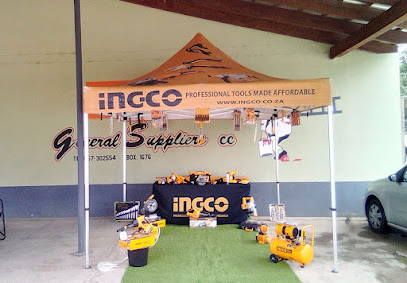
Essential bars & hidden hideouts
Memoirs Bar & Restaurant
Discover the culinary delights of Memoirs Bar & Restaurant in Otjiwarongo, where local flavors meet a warm, inviting atmosphere.
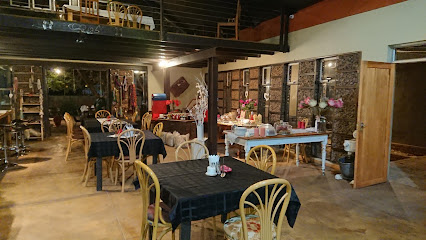
Virmos Bar
Experience the vibrant nightlife at Virmos Bar in Otjiwarongo, where refreshing drinks and local culture come together for an unforgettable evening.
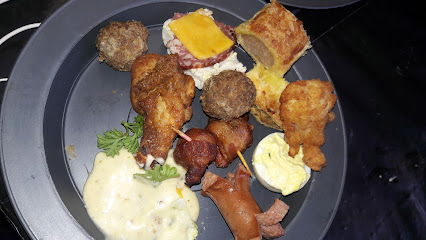
Podjo's Restaurant, Bar & Grill
Discover the vibrant flavors of Namibia at Podjo's Restaurant, Bar & Grill in Otjiwarongo, where local cuisine meets warm hospitality.
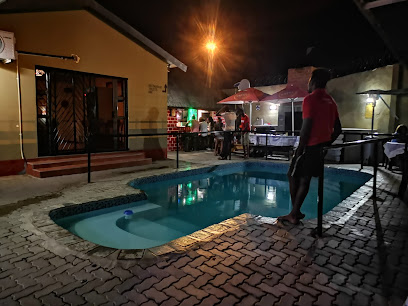
CABRITO, Lounge, Bar & Restaurant
Experience the vibrant atmosphere and delicious cuisine at CABRITO, Otjiwarongo's top lounge, bar, and restaurant, perfect for tourists and locals alike.
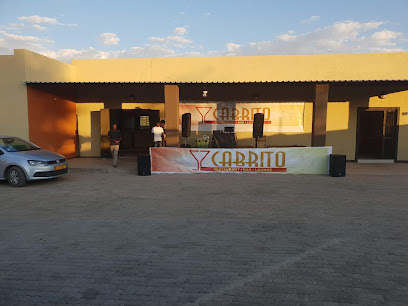
Erindi Sport Bar
Discover the vibrant atmosphere of Erindi Sport Bar in Otjiwarongo, where locals and tourists unite over drinks and sports in a relaxed setting.
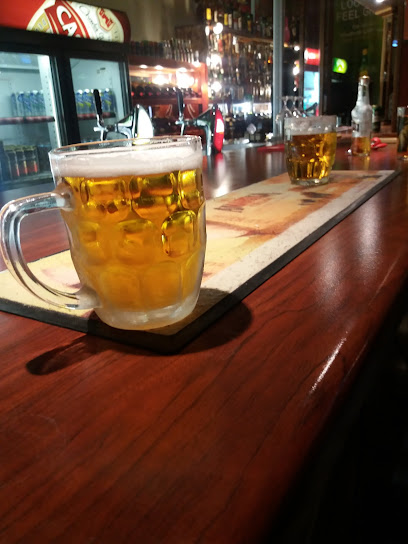
Etemba Beerhouse
Experience the vibrant culture and flavors of Namibia at Etemba Beerhouse in Otjiwarongo, where local brews meet delicious traditional cuisine.
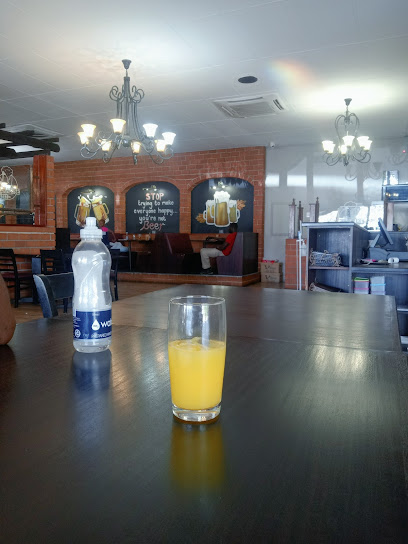
Black beer house
Discover Black Beer House: A vibrant bar in Otjiwarongo offering a warm ambiance and a rich selection of local brews, perfect for every traveler.

Leo's Bar
Discover the vibrant ambiance and local flavor at Leo's Bar in Otjiwarongo, where nightlife comes alive with every drink and conversation.

Etale Bar Depot
Discover the vibrant local culture at Etale Bar Depot in Otjiwarongo, a perfect retreat for tourists seeking relaxation and a taste of Namibia.

Stoneman
Experience the vibrant spirit of Otjiwarongo at Stoneman, where local culture and refreshing beverages come together in a lively bar atmosphere.

Nakalondo Bar
Experience the vibrant nightlife at Nakalondo Bar in Otjiwarongo, where local culture meets refreshing drinks in a lively atmosphere.

Nampower Bar
Experience the vibrant atmosphere and refreshing drinks at Nampower Bar, the perfect spot for relaxation in Otjiwarongo, Namibia.

Scorpion Bar
Experience the vibrant local culture at Scorpion Bar in Otjiwarongo, where drinks, laughter, and camaraderie await every visitor.

Las Palmas Otjiwarongo
Experience the lively atmosphere of Las Palmas Otjiwarongo, where great drinks and local culture come together in the heart of Namibia.

Eyambeko Otjiwarongo
Experience the vibrant local culture at Eyambeko Otjiwarongo, a lively bar perfect for unwinding with refreshing drinks and friendly conversations.

Local Phrases
-
- HelloHallo
[ha-lo] - GoodbyeTotsiens
[toh-tsee-ens] - YesJa
[yah] - NoNee
[nee] - Please/You're welcomeAsseblief
[ah-suh-bleef] - Thank youDankie
[dun-kee] - Excuse me/SorryJammer
[yah-mer] - How are you?Hoe gaan dit?
[hoo gahn dit] - Fine. And you?Goed. En jy?
[khoot. en yai] - Do you speak English?Praat jy Engels?
[praht yai eng-els] - I don't understandEk verstaan nie
[ehk fur-staan nee]
- HelloHallo
-
- I'd like to see the menu, pleaseEk wil die spyskaart sien, asseblief
[ehk vil dee spys-kart seen, ah-suh-bleef] - I don't eat meatEk eet nie vleis nie
[ehk ayt nee flays nee] - Cheers!Gesondheid!
[ghuh-sunt-hait] - I would like to pay, pleaseEk wil asseblief betaal
[ehk vil ah-suh-bleef buh-tahl]
- I'd like to see the menu, pleaseEk wil die spyskaart sien, asseblief
-
- Help!Help!
[help] - Go away!Gaan weg!
[ghahn vehg] - Call the Police!Bel die Polisie!
[bel dee poh-lee-see] - Call a doctor!Bel 'n dokter!
[bel un dohk-tuh] - I'm lostEk is verlore
[ehk is fehr-loh-ruh] - I'm illEk is siek
[ehk is seek]
- Help!Help!
-
- I'd like to buy...Ek wil koop...
[ehk vil kohp] - I'm just lookingEk kyk net
[ehk kuhk neht] - How much is it?Hoeveel kos dit?
[hoo-veel kohs dit] - That's too expensiveDit is te duur
[dit is tay doo-er] - Can you lower the price?Kan jy die prys verlaag?
[kahn yai dee prays fur-lahg]
- I'd like to buy...Ek wil koop...
-
- What time is it?Hoe laat is dit?
[hoo laht is dit] - It's one o'clockDit is een uur
[dit is ayn oor] - Half past (10)Half tien
[hahlf teen] - MorningOggend
[oh-khuhnt] - AfternoonMiddag
[mi-dahkh] - EveningAand
[ahnt] - YesterdayGister
[ghis-tur] - TodayVandag
[fuhn-dahkh] - TomorrowMôre
[moh-ruh] - 1Een
[ayn] - 2Twee
[twee] - 3Drie
[dree] - 4Vier
[feer] - 5Vyf
[fayf] - 6Ses
[sehs] - 7Sewe
[seh-veh] - 8Agt
[ahgt] - 9Nege
[neh-ghuh] - 10Tien
[teen]
- What time is it?Hoe laat is dit?
-
- Where's a/the...?Waar is 'n/die...?
[vahr is un/dee] - What's the address?Wat is die adres?
[vaht is dee ah-drehs] - Can you show me (on the map)?Kan jy my wys (op die kaart)?
[kahn yai may vays (ohp dee kahrt)] - When's the next (bus)?Wanneer is die volgende (bus)?
[vah-nehr is dee fuhl-guhn-duh (buhs)] - A ticket (to ....)'n Kaartjie (na ....)
[un kahrt-chee (nah)]
- Where's a/the...?Waar is 'n/die...?
History of Otjiwarongo
-
Long before European settlers arrived, the area now known as Otjiwarongo was inhabited by the indigenous Herero people. They were primarily pastoralists, herding cattle across the vast savannas. The name 'Otjiwarongo' itself is derived from the Herero language, meaning 'pleasant place'. This reflects the region's fertile land and abundance of water sources, which made it a critical area for livestock farming.
-
In the late 19th century, Namibia came under German colonial rule, and Otjiwarongo was established as a significant administrative and military post. The Germans built a railway station here in 1906, which boosted the town's strategic importance. This period also saw the construction of several colonial-era buildings, some of which still stand today, offering a glimpse into the architectural style of that era.
-
One of the darkest chapters in Otjiwarongo's history is its connection to the Herero and Namaqua Genocide between 1904 and 1908. During this period, the German colonial forces launched a brutal campaign against the Herero and Nama people, resulting in the deaths of tens of thousands. Otjiwarongo served as a key location in the German military operations, and many Herero people were displaced from their ancestral lands.
-
After World War I, Namibia came under South African administration. Otjiwarongo continued to grow as a key agricultural and commercial center during this time. The town's railway connections made it an important hub for transporting goods, particularly cattle and maize, to other parts of Namibia and beyond.
-
Namibia gained its independence from South Africa in 1990. Since then, Otjiwarongo has continued to develop and modernize. It has become a vibrant town with a mix of cultures and ethnicities. The local economy is still heavily reliant on agriculture, but tourism has also become increasingly important, with attractions like the Cheetah Conservation Fund drawing visitors from around the world.
-
Otjiwarongo is a melting pot of cultures, with a rich heritage that includes Herero, Damara, and Afrikaans influences. Traditional Herero dress, characterized by its distinctive Victorian-inspired gowns, is still commonly seen during cultural festivals. The town also hosts various cultural events throughout the year, celebrating its diverse history and traditions.
Otjiwarongo Essentials
-
Otjiwarongo is located in the Otjozondjupa Region of Namibia. The nearest international airport is Hosea Kutako International Airport in Windhoek, approximately 250 kilometers away. From Windhoek, you can either rent a car or take a shuttle service to Otjiwarongo. The drive typically takes around 2.5 to 3 hours via the B1 highway. Alternatively, you can opt for bus services that operate between Windhoek and Otjiwarongo.
-
Otjiwarongo is a small town, making it easy to explore on foot. For longer distances, taxis are readily available and inexpensive. Car rentals are also a convenient option for exploring the surrounding areas and nature reserves. Public buses and combis (shared taxis) operate within the town and can connect you to nearby towns and villages.
-
The official currency in Namibia is the Namibian Dollar (NAD), which is pegged to the South African Rand (ZAR). Both currencies are accepted in Otjiwarongo. Credit cards are widely accepted in hotels, restaurants, and larger shops, but it is advisable to carry cash for smaller establishments and markets. ATMs are available throughout the town for cash withdrawals.
-
Otjiwarongo is generally considered safe for tourists, but standard precautions should be taken. Avoid walking alone at night in unfamiliar areas and be cautious of your surroundings. While there are no specific high-crime areas targeting tourists, it is best to stay vigilant and keep your valuables secure. Petty theft can occur, especially in crowded places like markets.
-
In case of an emergency, dial 112 for immediate assistance. Otjiwarongo has a local police station and medical facilities, including a hospital and several clinics. It is recommended to have travel insurance that covers medical emergencies. Pharmacies are available in the town for over-the-counter medications and minor health issues.
-
Fashion: Do dress modestly and comfortably, especially in rural areas. Avoid wearing overly revealing clothing. Religion: Do respect local customs and traditions. When visiting places of worship, dress conservatively and behave respectfully. Public Transport: Do be courteous to drivers and fellow passengers. Don’t eat or drink on public transport. Greetings: Do greet people with a handshake and a friendly smile. It is polite to ask 'How are you?' (often said in Afrikaans as 'Hoe gaan dit?'). Eating & Drinking: Do try local dishes and accept food offerings graciously. Don’t refuse hospitality, as it is considered impolite.
-
To experience Otjiwarongo like a local, visit the local markets where you can buy fresh produce and traditional Namibian goods. Engage with the locals, as they are often friendly and willing to share stories about the town's history and culture. Don’t miss a visit to the Cheetah Conservation Fund, located just outside of town, for a unique wildlife experience. For an authentic dining experience, try local eateries that serve traditional Namibian cuisine.
Trending Landmark in Otjiwarongo
-
Crocodile Farm Otjiwarongo
-
Cest Si Bon Hotel
-
Casa Forno County Hotel
-
Out of Africa Town Lodge
-
Okonjima Nature Reserve
-
Waterberg Plateau National Park
-
Shell
-
Midway Convenience Shell
-
Memoirs Bar & Restaurant
-
Hadassa Guest House B&B
-
Okonjima Bush Camp
-
Waterberg Guest Farm Namibia
-
Kamaku Guest House B&B
-
Otjibamba Lodge
-
Etemba Beerhouse
Nearby Cities to Otjiwarongo
-
Things To Do in Outjo
-
Things To Do in Omaruru
-
Things To Do in Etosha Village
-
Things To Do in Okahandja
-
Things To Do in Tsumeb
-
Things To Do in Karibib
-
Things To Do in Usakos
-
Things To Do in Windhoek
-
Things To Do in Ongwediva
-
Things To Do in Oshakati
-
Things To Do in Swakopmund
-
Things To Do in Walvis Bay
-
Things To Do in Rundu
-
Things To Do in Mariental
-
Things To Do in Keetmanshoop







